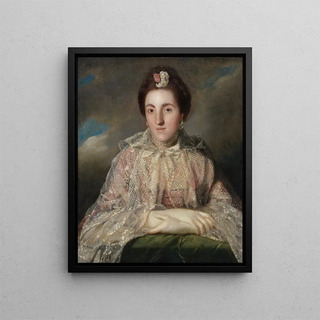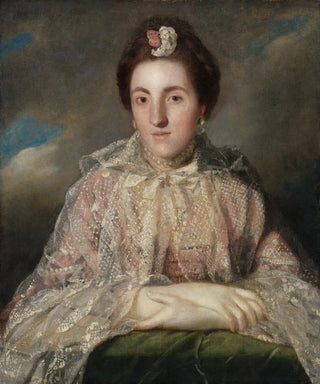Art print | Portrait of Mrs. William Fortescue 1733-1820, later Countess of Clermont - Sir Joshua Reynolds


View from behind

Frame (optional)
Portrait of Mrs. William Fortescue 1733-1820, later Countess of Clermont - Sir Joshua Reynolds – Captivating introduction
In the world of art, some works transcend time and capture the essence of an era while revealing personal stories. The "Portrait of Mrs. William Fortescue 1733-1820, later Countess of Clermont" by Sir Joshua Reynolds is one of those masterpieces that fascinate with their elegance and depth. This painting, created in the 18th century, does not merely depict an aristocratic figure; it also embodies the values and aspirations of a society in full transformation. Contemplating this work, the viewer is transported into a universe where beauty and social status intertwine, offering a glimpse into the customs and conventions of the time.
Style and uniqueness of the work
Reynolds's style is recognizable above all, and this portrait is no exception. Mastery of light and shadow, as well as the delicacy of details, give the work a striking depth. Mrs. Fortescue is depicted with natural grace, her richly draped clothing adorned with textures that seem almost tangible. The color palette, subtly chosen, evokes an atmosphere of serenity and dignity. The artist manages to capture not only her physical appearance but also her character and status. This portrait is a celebration of femininity, where the woman is presented as a being of power and charm, while remaining rooted in the conventions of her time.
The artist and his influence
Sir Joshua Reynolds, one of the most influential portraitists of the 18th century, knew how to mark his era with his innovative approach and distinctive style. Founder of the Royal Academy, he played a key role in the development of British art, encouraging an aesthetic that blends classicism and romanticism. His portraits, often commissioned by the aristocracy, are not only faithful representations but also declarations of power and prestige. Reynolds drew inspiration from the old masters while developing a technique that was uniquely his own. His impact on portrait painting is undeniable, and his legacy endures through generations of art.

Matte finish

View from behind

Frame (optional)
Portrait of Mrs. William Fortescue 1733-1820, later Countess of Clermont - Sir Joshua Reynolds – Captivating introduction
In the world of art, some works transcend time and capture the essence of an era while revealing personal stories. The "Portrait of Mrs. William Fortescue 1733-1820, later Countess of Clermont" by Sir Joshua Reynolds is one of those masterpieces that fascinate with their elegance and depth. This painting, created in the 18th century, does not merely depict an aristocratic figure; it also embodies the values and aspirations of a society in full transformation. Contemplating this work, the viewer is transported into a universe where beauty and social status intertwine, offering a glimpse into the customs and conventions of the time.
Style and uniqueness of the work
Reynolds's style is recognizable above all, and this portrait is no exception. Mastery of light and shadow, as well as the delicacy of details, give the work a striking depth. Mrs. Fortescue is depicted with natural grace, her richly draped clothing adorned with textures that seem almost tangible. The color palette, subtly chosen, evokes an atmosphere of serenity and dignity. The artist manages to capture not only her physical appearance but also her character and status. This portrait is a celebration of femininity, where the woman is presented as a being of power and charm, while remaining rooted in the conventions of her time.
The artist and his influence
Sir Joshua Reynolds, one of the most influential portraitists of the 18th century, knew how to mark his era with his innovative approach and distinctive style. Founder of the Royal Academy, he played a key role in the development of British art, encouraging an aesthetic that blends classicism and romanticism. His portraits, often commissioned by the aristocracy, are not only faithful representations but also declarations of power and prestige. Reynolds drew inspiration from the old masters while developing a technique that was uniquely his own. His impact on portrait painting is undeniable, and his legacy endures through generations of art.






